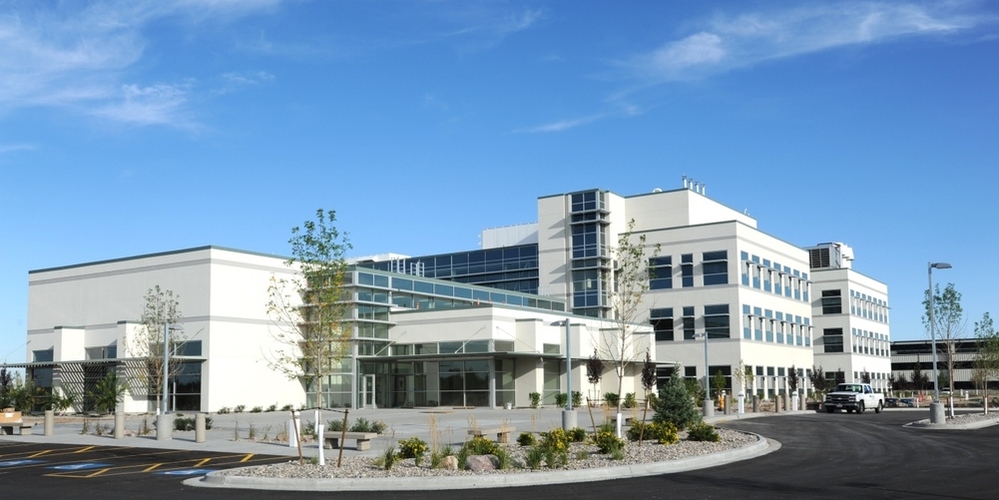
The new Research Education Laboratory (REL) is a private development that will provide laboratory, office, and a small assembly space for Idaho National Laboratory (INL) under a long-term lease agreement. The land was purchased by the developer because it is adjacent to Department of Energy/federal government property at INL. Although the design and construction teams are under contract with the developer, INL and its current operator, Battelle Energy Alliance (BEA) staff had significant input into setting the standards (LEED-Gold required) and the design of the functional spaces.
As part of the purchase agreement, the developer was required to purchase nearly 450,000 square feet of land. The stormwater quantity and quality control measures were designed and constructed to meet the future needs of all of the acreage even though only 358,651 sq. feet were utilized for this project. The additional land is expected to be developed in the future and therefore was not included in the LEED project boundary.
Three specific challenges include the following:
1.) Integration of this team was a challenge because of the number of entities involved as well as the number of individuals. Relationships in private projects being developed for public entities are governed by both legal documents (accepted proposals and tenant leases) that often clash during design and construction.
2.) Finances are always a challenge and this has proven to be the case as the desires of the INL and BEA to be "green" leaders and demonstrate their program technologies often exceed the original Basis of Design and Owner's Performance Requirements. The original RFP and subsequent accepted proposal from the developer was nearly five years ago and the advances in technology and opportunities for inclusion of a diversity of INL research programs have strained the original identified budget for the developer.
3.) A significant challenge for this project is demonstrating/documenting energy savings based on cost. The City of Idaho Falls, Idaho, is well known across the nation for its historically record low energy costs due to nearly 100% hydropower generation from the river. INL is not permitted to pay higher utility rates for "payback periods" on renewable energy systems as is a conventional finance method today.